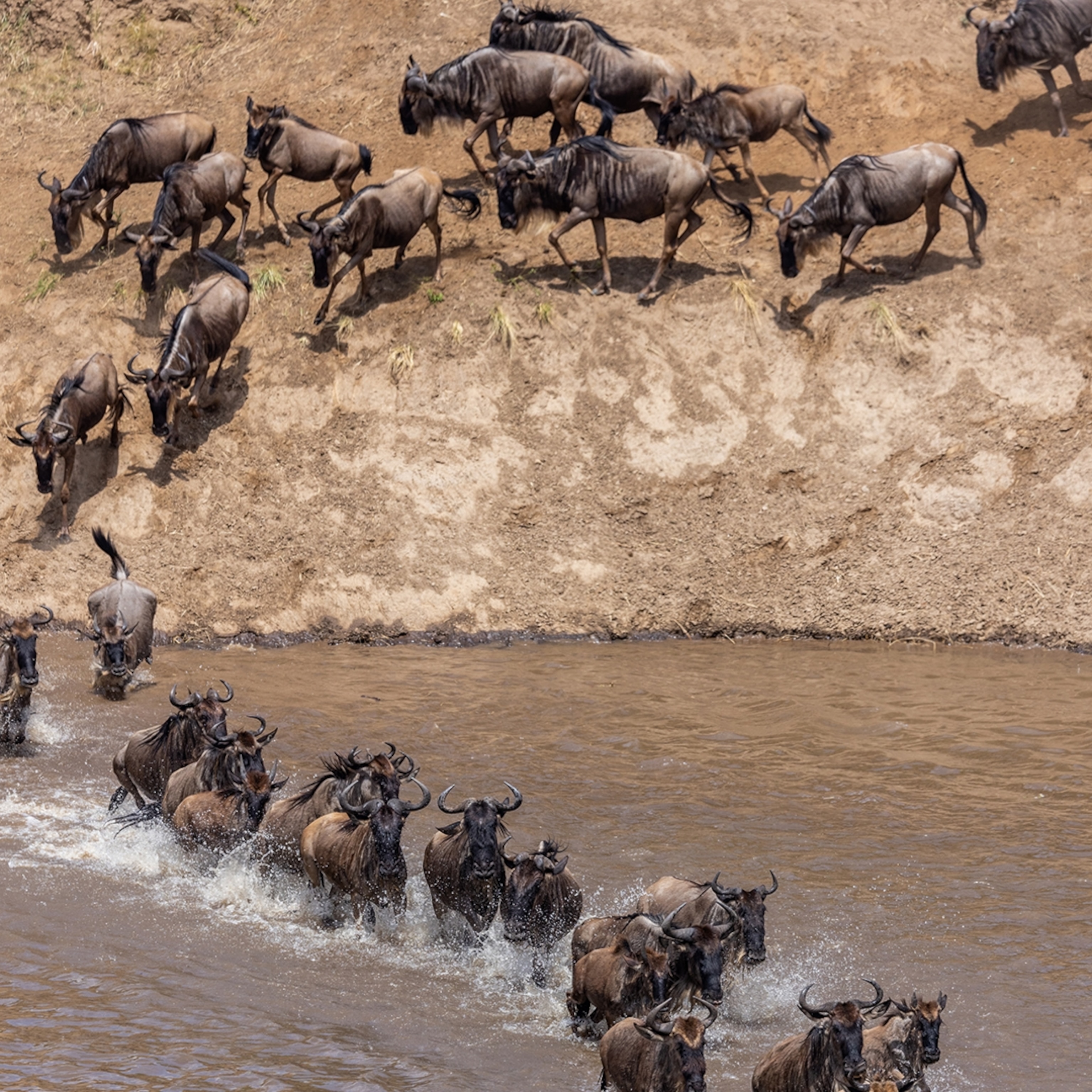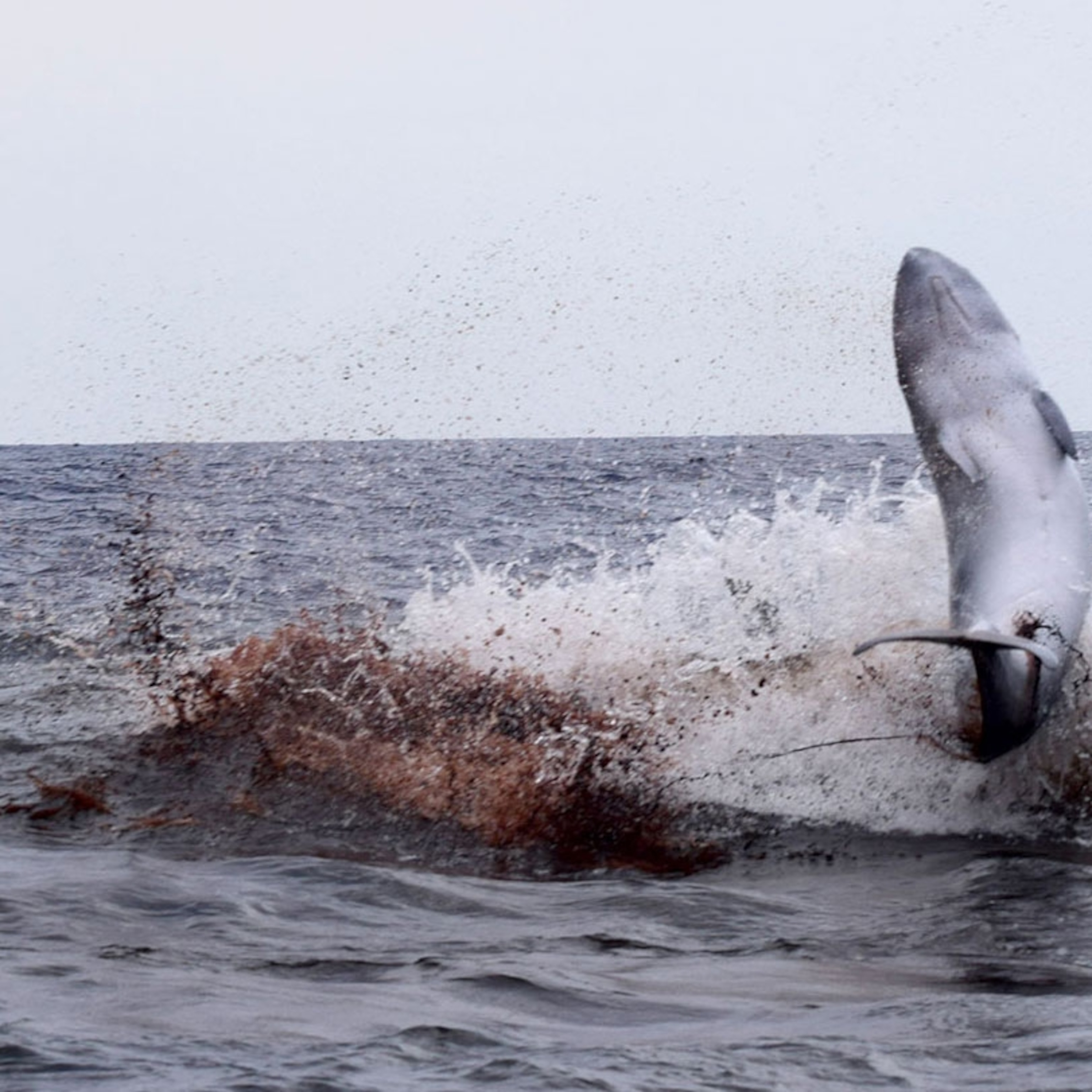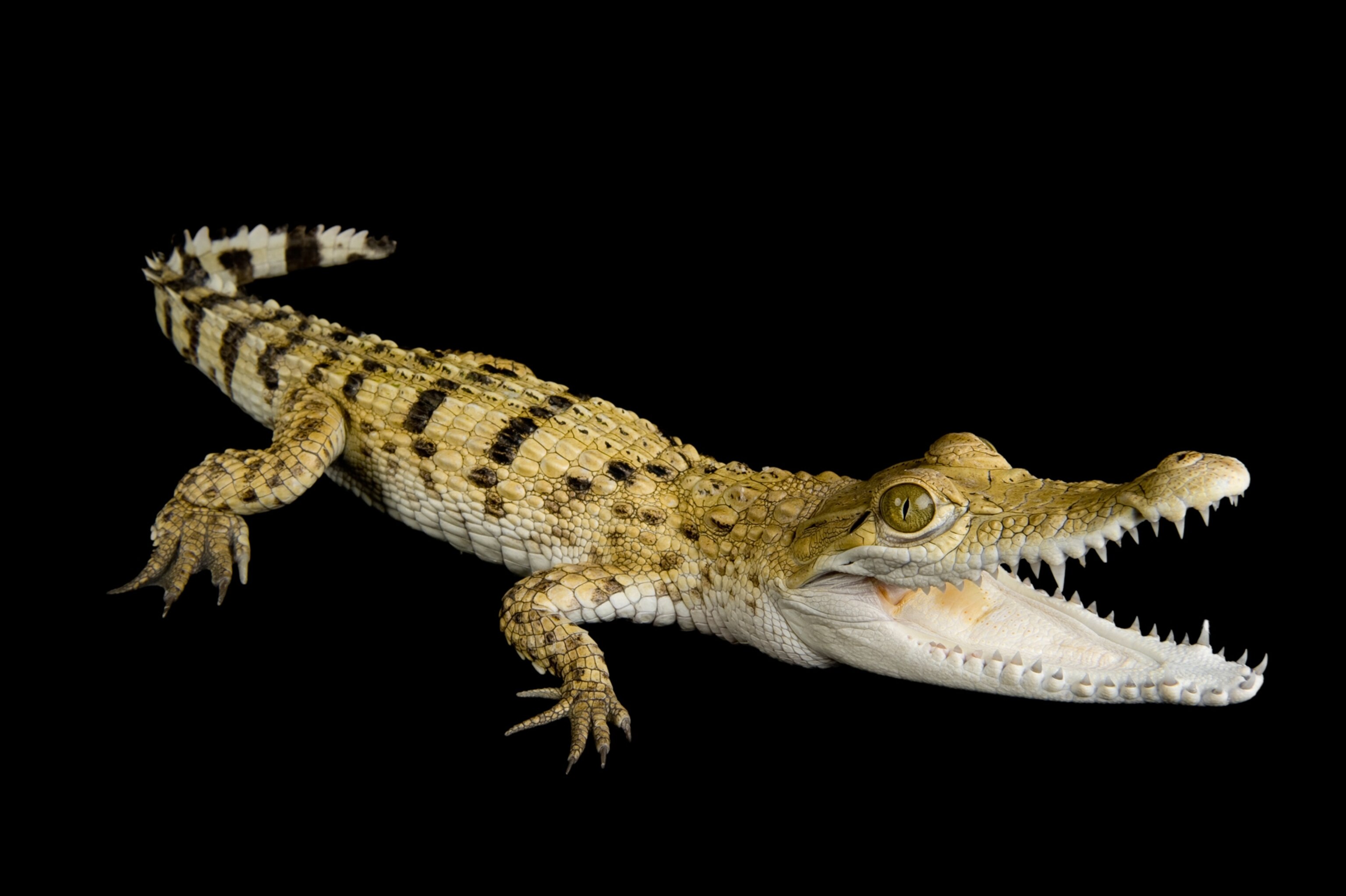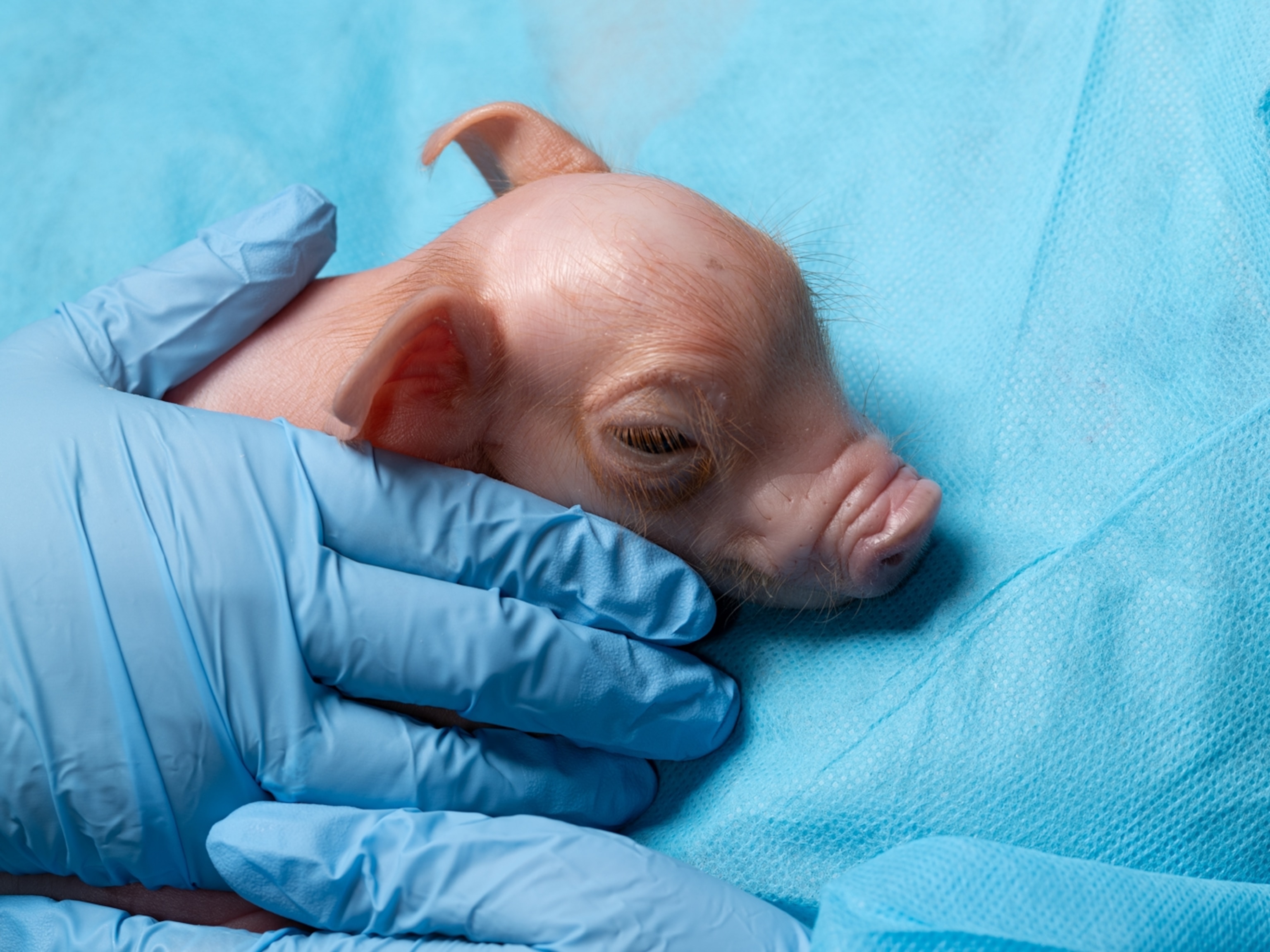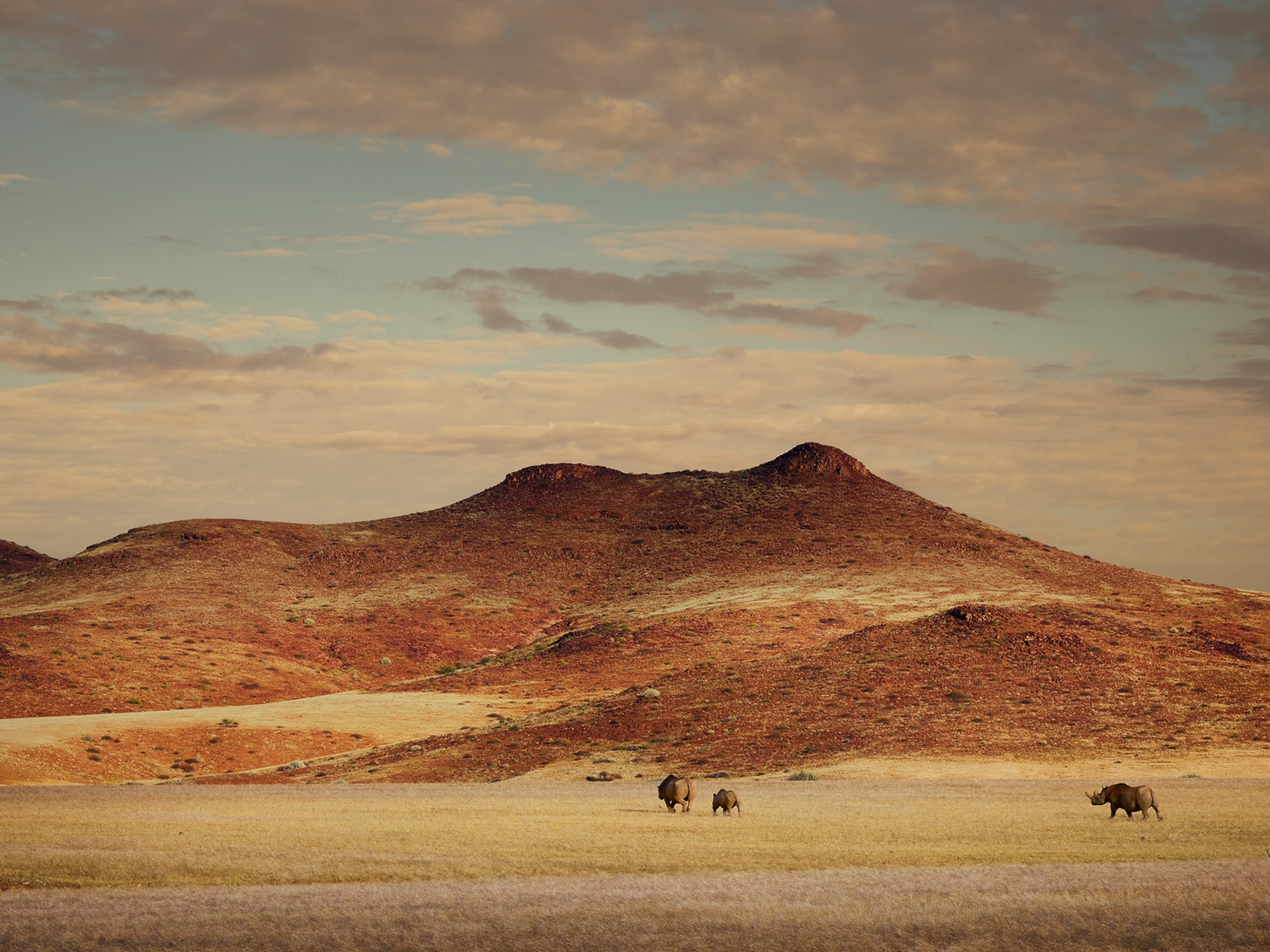World’s Biggest Pig Captured in Rare Video
The 600-pound giant forest hog is expert at avoiding people, who are increasingly hunting the animal in its African habitat.
At 600 pounds, the giant forest hog may be on average the world’s biggest pig—but it’s also one of the most mysterious.
The bristly black animal with prominent cheeks and sharp tusks likes to avoid people, much to the chagrin of Rafael Reyna-Hurtado, a National Geographic explorer and wildlife ecologist who has been tracking the little-studied species in Uganda.
There are likely three species of giant forest hog in West, Central, and East Africa. Reyna-Hurtado focuses on the eastern giants, and new camera trap video reveals how their family groups interact and where they prefer to spend most of their time. For example, the social creatures tend to travel in groups of three to four adult females, their piglets and juveniles, a dominant male, and sometimes subordinate males.
“Very few people see them, given that they are a relatively large animal,” says Reyna-Hurtado, of El Colegio de la Frontera Sur, a research center in Mexico.
Yet giant forest hogs haven’t managed to escape us entirely. People are hunting the pig for food more than ever before, and East African pig populations have been “decreasing at alarming rates,” he adds. (Read about an alarm system that could stop poachers in their tracks.)
It’s a fate similar to that of the 17 other wild pig species alive today, most of which are also poorly known and in decline.

We caught up with Reyna-Hurtado to learn about his dedication to saving what he lovingly calls these “uglies” of the forest.
Can you tell me the latest about your research?
I’ve been in Kibale National Park every year since 2010. The main goal was to capture individuals of giant forest hogs. We tried for four seasons—but we still couldn’t capture them. The purpose was to study their movements and estimate how much area a group needs, and what are their favored vegetation types. In the last two seasons we relied more in the camera traps that were giving us a lot of data, and we also tracked them by foot with the help of very skilled trackers.
In Toro-Semliky Wildife Reserve, adjacent to Kibale, we found a group of 25 animals. That was amazing for me, because in Kibale they are always groups of 10 to 11 animals. That is good news and probably indicates that in the wildlife reserve the population is larger than the one in Kibale.
The species is suffering from high poaching pressure; two months ago, we rescued a large male caught in a snare in Kibale, but he died two days later. He was the dominant male in the group we were following for five years.
Was it a snare specifically for hogs?
Yes, because they’re exactly in the areas where giant forest hogs are the most frequent animal. That means people like the meat of the animal and are targeting them. Poachers are everywhere—that is the main problem. We need to tackle poaching with strategies like reinforcing patrols. If we could satisfy the human needs in the communities, they will stop poaching.
What is the conservation status of the species?
The species is currently listed in the International Union for Conservation of Nature’s Red List as least concern, because three subspecies range from West to East Africa along the tropical belt. Some researchers claim that the three subspecies deserve the status of species; therefore, we need to more genetic and morphological evidence to confirm that. (See more photographs of African wildlife.)
In any case, the eastern subspecies is one of the most endangered hogs in the world, and it lives in scattered populations in two or three spots in Uganda, Kenya, Ethiopia, and probably South Sudan. In my last report, we estimated a population in Kibale of less than 200 animals.
The subspecies that lives in West Africa is also not doing well. Apparently the one that lives in Central Africa, in the Congo Basin, is doing OK.
Have you observed any unusual behavior?
Our recent camera trap data shows a lot of juveniles and newborns are being protected by the dominant male, under his legs—that’s strange because sometimes dominant males commit infanticide. (Watch a video of peccaries, a pig-like relative, possibly mourning their dead.)
We also confirmed that they congregate around swampy areas—they need to go every day to bathe in the mud. Pigs don’t have the ability to sweat, so they need to get fresh and cool with mud.
Why are pigs good for the environment?
They keep herbaceous plants in control, and that may allow other forest species to flourish. For instance, in America, peccaries help keep water points from drying out by constantly rolling in them, and this helps frogs and lizards and other animals that need water. Giant forest hogs are important [parts] of the food chain as prey for leopards and lions.
See 10 of the Rarest Animals on Earth
Are giant forest hogs smart like other pigs?
They are highly intelligent—this is why we were not able to capture them! [laughs.] They know humans pose a risk for them everywhere and avoid any area that has been recently visited by humans. They may also have spatial memory—they can remember exactly where a water point is, and go straight to some specific spot. (Read how wild boars wash their food.)
What draws you to study pigs and their relatives?
They’re amazing species—the first time I saw peccaries in Mexico, I got fascinated because there were 72 animals crossing in front of me in a very coordinated way, showing me how smart they are. Also, almost every species of peccaries and wild pigs are endangered or have some kind of risk—the wild boar is the only one doing well. The first time I met wild pigs, I decided to dedicate my life to studying and conserving them.
This interview has been edited for length and clarity.


